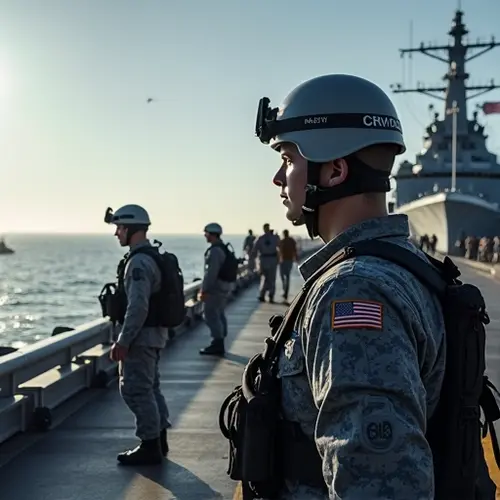
US Navy Showcases Strength Amidst Media Restrictions
On the deck of the USS George W. Bush, the sheer scale of the aircraft carrier is overwhelming. Stretching 300 meters, this floating fortress is home to approximately 5,700 military personnel, including ship crew and aviation staff. The vessel, powered by nuclear energy, is one of eleven such carriers in the US fleet, a stark contrast to Europe, where only France operates a similar ship.
Media Tour Under Tight Control
The US Navy recently hosted a press tour at Norfolk, Virginia, the world's largest naval base. However, this year's event was markedly different. High-ranking military officials canceled interviews at the last minute, and lower-ranking personnel were instructed to remain tight-lipped, repeatedly stating, "No comment." This directive reportedly came from the top, with Defense Minister Hegseth tightening control over media interactions following previous blunders.
Budget Boost and NATO Implications
President Trump has proposed increasing the US defense budget from $850 billion to $1 trillion, funding projects like the Golden Dome, a satellite-guided missile defense system. While the House of Representatives has approved the budget, the Senate is yet to vote. Comparatively, China's defense budget stands at $250 billion, highlighting the US's dominant military spending.
NATO's Financial Dilemma
The US currently allocates 3.5% of its GDP to defense, while EU member states average below 2%. Trump has pushed for NATO members to increase their contributions to 5%, a figure deemed unrealistic by many. NATO Secretary-General Rutte has proposed a compromise, suggesting member states aim for 3.5% defense spending, with an additional 1.5% for cybersecurity and infrastructure.
Political and Strategic Shifts
Despite earlier threats to withdraw from NATO, Trump's recent actions, including appointing a new ambassador and nominating a US general as SACEUR, signal a continued commitment to the alliance. Analysts like Jim Townsend view these moves as positive indicators for NATO's stability.

 Nederlands
Nederlands
 English
English
 Deutsch
Deutsch
 Français
Français
 Español
Español
 Português
Português